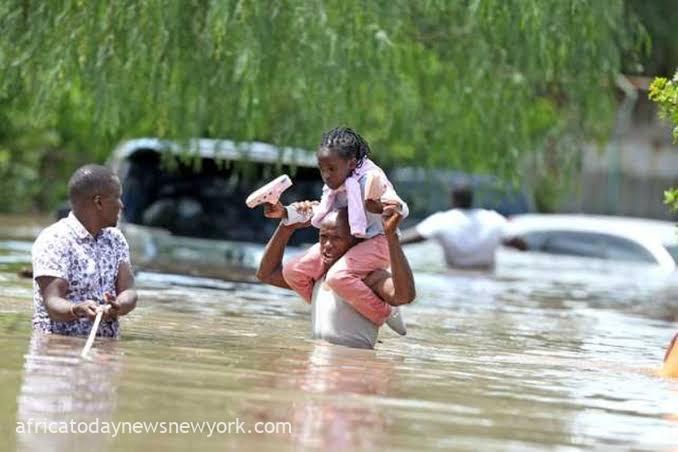A rain-induced disaster has struck with an impact on 51,000 households and over 200,000 people. The human toll is severe, with 155 lives lost and 236 others hurt, as confirmed by Majaliwa’s report.
Majaliwa apprised parliament in Dodoma, Tanzania‘s capital, of the considerable destruction resulting from the intense El Nino rains, which were accompanied by strong gusts, serious flooding, and devastating mudslides in various parts of the country.
He further stated that the consequences of the disaster included human fatalities, ruin of agricultural produce, demolition of residences, citizens’ belongings, and critical infrastructure like highways, bridges, and rail networks.
El Nino, a powerful and naturally occurring climate phenomenon, brings with it a double-edged sword of extreme weather conditions. While it unleashes scorching heat globally, it also triggers devastating droughts in some regions and torrential rains in others, posing a significant threat to East Africa’s vulnerable communities.
Burundi, already grappling with the burdens of extreme poverty, is now facing a new crisis as torrential rains have forced a staggering 96,000 people from their homes. The relentless downpour has unleashed a humanitarian crisis in one of the world’s most vulnerable nations.
Torrential rains have wreaked havoc in Kenya, claiming at least 45 lives since the onset of the rainy season in March. The capital city, Nairobi, bore the brunt of the flash floods this week, resulting in 13 tragic fatalities.
Torrential rains have pushed Kenya to the brink, prompting President William Ruto to convene an emergency meeting with top officials. The floods have unleashed chaos, inundating homes in slum districts, and crippling the city’s infrastructure.
Read also: Missile Attack Kills Many Tanzanian Soldiers In DR Congo
Kenyans have been warned to stay on alert, with the forecast for more heavy rains across the country, while officials said people living in the most vulnerable areas would be relocated.
“The government… will do whatever it takes, apply all the required resources in terms of money and personnel to make sure that lives are not lost and the people of Kenya are protected from this disaster,” Deputy President Rigathi Gachagua told a press briefing.
Meanwhile, the UN humanitarian response agency OCHA said in an update this week that in Somalia, the Gu (April to June) rains are intensifying with flash floods reported since April 19.
It said four people have been reportedly killed at least 134 families or more than 800 people affected or displaced across the country.
A devastating deluge hit Kenya, Somalia, and Ethiopia towards the end of last year, resulting in the loss of more than 300 lives. This tragedy occurred as the region was attempting to recover from its most severe drought in 40 years, which had left millions of people in a state of hunger.
Between October 1997 and January 1998, a series of massive floods struck five countries in the region, causing unprecedented destruction and claiming over 6,000 lives in one of the deadliest disasters of the decade.
The WMO reported in March that the El Nino event, which peaked in December, ranked among the five strongest ever recorded. Although the weather pattern is gradually weakening, its impact will persist in the coming months, contributing to above-normal temperatures over nearly all land areas between March and May.
As the weather pattern slowly weakens, its influence will persist in the coming months, further intensifying the heat trapped in the atmosphere due to greenhouse gases.
The WMO’s latest quarterly report predicts that land areas worldwide will experience unusually high temperatures from March to May, with only a few exceptions.

